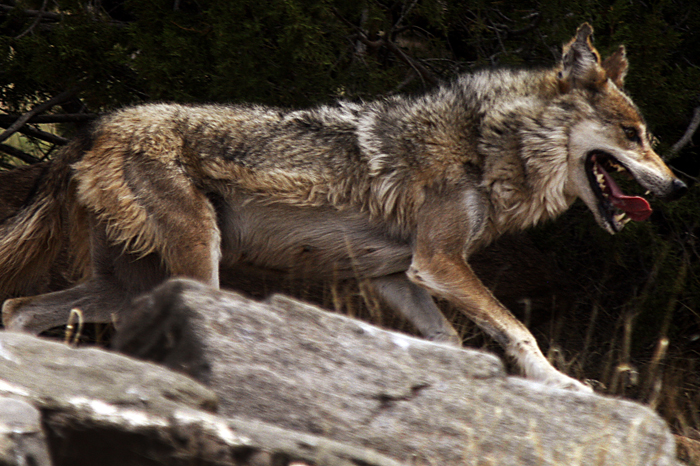Wolf population need decreasing
Wolf population needs to be maintained in order to protect other wildlife.
January 27, 2014
Kill or be killed, every animal on earth is created for a purpose.
All animals have a right to life, but when a species is overpopulating an area actions should be taken to lessen their numbers.
At the end of 2012 there were 683 wolves in Idaho, according to Idaho Department of Fish and Game (IDFG). Since then the population has only increased.
At the expense of maintaining a strong ecosystem, it only makes sense for officials to take matters into their own hands and take the necessary precautions.
There are currently more than 100 breeding wolf packs residing in the area, as indicated by Virgil Moore, the director of the Idaho Department of Fish and Game.
IDFG officials want nothing more than to manage the number of wolves in state to protect livestock, as well as people, and increase the elk population.
They have been doing this around the state since March 2002 when the Idaho legislature adopted the Idaho Wolf Conservation and Management Plan, which allowed IDFG to hunt and trap some of the wolves to decrease pack sizes.
The current issue, which District Judge Edward Lodge addressed on Jan. 17, was a request from Idaho’s conservationists.
The conservationists’ plea was to stop the state’s Department of Fish and Game from entering and eradicating two wolf packs in the 2.4 million-acre Frank Church-River, which is a federally protected wilderness area, as reported by the Idaho Statesman.
After evaluation, Lodge wrote a decision allowing IDFG to maintain the population of wolves in that area. The decision is very reasonable considering what is at stake.
The federally protected wilderness area has six wolf packs. IDFG is only going to eradicate two of the packs including the Golden and Monumental packs. Department officials allowed doing this on account of the pack’s vigorous hunting of elk calves, according to the Idaho Statesman. By doing this the packs will be easier to manage in the area.
Also as a result from this eradication an increase in elk population will continue. If the request had gone through, then the number of elk would have decreased, which could have eventually led to an extinction of a species that plays its own significant role in the food chain.
I am willing to bet that the conservationist groups would not have liked that either.
In addition, it is more humane to manage the population artificially since it was humans who put the wolves in the area in the first place.
During the 1990s the wolves were imported from Canada as a bid to re-introduce the species to the Northern Rockies, according to Reuters.
It is better that humans manage the pack sizes in the federally protected wilderness than to risk the packs getting too large and escaping. If this happened, livestock, such as cows and sheep, would be in greater danger and human lives also could be at risk.
Although there are land limitations, Lodge’s decision to deny the request was for the better.
While some would say let nature take its course and allow the populations to fluctuate according to the hunter-prey curve, this is not plausible.
Humans do their part in limiting prey, such as elk, from running. Between wolves, other predators, and hunting season, there is really nowhere to go.
All species, big or small, need to be managed efficiently and effectively in order to keep natural order. Animal populations need to be artificially stabilized when they are artificially induced by humans to cease both extinction and overpopulating.
-Marissa Mararac is a junior communication major from Tacoma. She can be contacted at 335-2290 or by [email protected]. The opinions expressed in this column are not necessarily those of the staff of The Daily Evergreen or those of Student Publications.





















